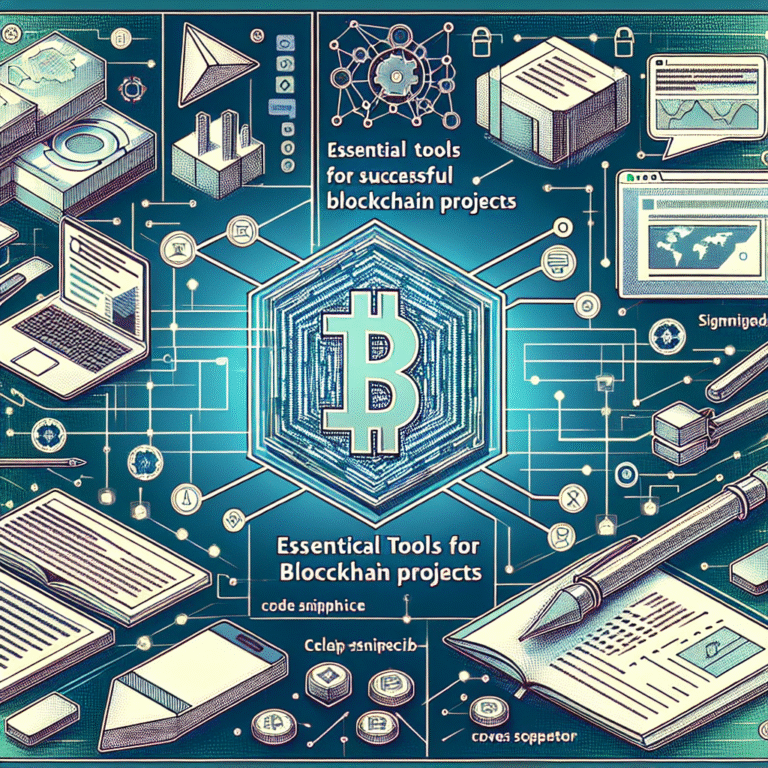The meme coin market might surprise you – experts predict a surge from $20 billion to $140 billion market cap by 2025.
Many people want to create their own meme coin and join this booming market. These viral tokens make up just 2.5% of the total cryptocurrency market but grab 31% of crypto market attention. The meme coin market saw incredible growth in 2024 when it jumped 800% from $20 billion to $120 billion by year-end.
What makes these tokens so special? Meme coins are cryptocurrency tokens that draw inspiration from internet jokes, memes, and popular culture. The most successful ones connect with people through clear, simple concepts that spread easily.
The cost to launch your own meme coin can vary significantly. Your launch scale determines the price – anywhere from $3,000 to over $15,000+. Network fees on platforms like Pump.Fun range between $50-300, while custom development could cost thousands of dollars. Solana users typically need 12 to 14 SOL to create a meme coin.
This piece will guide you through creating your own meme coin in 2025. We’ll cover everything from blockchain selection to those hidden fees other guides miss. Ready to dive in?
What Makes Meme Coins So Popular in 2025
Meme coins have evolved from internet jokes into powerful community-driven financial phenomena in 2025. These digital assets represent just 2.5% of the total cryptocurrency market yet command 31% of crypto market attention, which sets them apart from traditional investments.
The rise of community-driven tokens
Community tokens are changing how people interact with digital assets. These tokens create a bridge between cryptocurrency and community-driven initiatives that offers a decentralized approach to rewards and governance. Members get a stake in their community’s success, which encourages ownership rather than mere speculation.
Meme coins utilize this community-driven model with remarkable results. Research shows that community members naturally become brand ambassadors who create content, join discussions, and promote tokens to their networks. This creates a positive feedback loop that turns casual observers into active participants with a vested interest in the token’s growth.
Community tokens have moved beyond speculative assets to become identity markers. Communities use these tokens to establish inside jokes, build loyalty, and create a sense of belonging that traditional cryptocurrencies rarely achieve.
Why meme coins go viral
Several key factors contribute to meme coins’ viral nature. Social media platforms like X (formerly Twitter), Reddit, and TikTok serve as powerful amplifiers that turn simple jokes into global movements almost overnight. A single viral post can attract thousands of new community members.
Celebrity influence serves as a vital catalyst. Prominent figures like Elon Musk can trigger dramatic price surges with a single tweet about tokens like Dogecoin. Musk’s X name change to “Kekius Maximus” sparked a massive 4,800% price increase for the referenced coin.
The widespread adoption stems from easy access. Most meme coins cost fractions of a cent, and investors can buy thousands or millions of tokens with minimal investment. An $11 investment could buy approximately 0.006 ETH, 0.0003 BTC, or a million SHIB tokens. New crypto investors find this psychological appeal of owning large quantities particularly attractive.
CoinGecko’s data reveals the phenomenon’s scale. Pump.fun facilitated 5.3 million meme coin launches between January 2024 and January 2025, with an average of 15,229 new tokens daily.
How they differ from traditional crypto
Meme coins prioritize community engagement and cultural relevance, unlike conventional cryptocurrencies that focus on technological innovation or utility. These coins function as social currencies rather than technical solutions.
Traditional cryptocurrencies’ value comes from underlying utility, technological advancements, or real-life applications. Meme coins typically lack fundamental economic use cases, and their worth depends on community belief, hype, and speculation.
This creates unique opportunities and risks. Crypto newcomers find meme coins’ simplicity appealing, which makes them excellent gateway tokens to the broader ecosystem. These coins show more volatility than traditional cryptocurrencies, with dramatic price swings triggered by tweets, trends, or celebrity endorsements.
Some meme coins have grown beyond their satirical roots. Floki Inu now includes metaverse gaming, NFT marketplaces, and educational platforms. Pawthereum supports charitable causes through transaction taxes. These hybrid models might represent meme coins’ future by combining internet culture’s community-driven appeal with genuine utility.
Tools and Platforms to Create a Meme Coin
The process of creating your own meme coin has become much simpler in 2025. Specialized platforms now handle all the technical parts of token creation, so you just need the right tools and platforms to start.
Choosing the right blockchain: Ethereum, Solana, BSC
Your choice of blockchain will affect your meme coin’s speed, costs, and reach. Three main blockchains lead the meme coin space today:
Ethereum serves as the foundation of modern meme coin development. It powers famous tokens like Shiba Inu (SHIB) and Pepe (PEPE). The platform provides deep liquidity, strong smart contract features, and a huge user base. This makes it perfect to create high-impact meme tokens that need maximum visibility and trust from investors.
Solana has become a powerhouse in meme coin creation. It offers lightning-fast speeds and tiny fees. Popular coins like Bonk (BONK) and Dogwifhat (WIF) call Solana home. The platform processes an amazing 162 million transactions each day. Creators love it because their communities can adopt tokens quickly.
BSC (Binance Smart Chain) lets you develop meme coins at a lower cost with great scaling options. Binance’s infrastructure supports the whole system. BEFE and DogeBonk are some well-known BSC meme coins. Many startups picked this blockchain early on because it was affordable yet reached many users.
No-code platforms like Pump.fun and TokenMint
No-code platforms have changed how we create meme coins. You don’t need to know coding anymore:
Pump.fun leads the Solana ecosystem. Anyone can create tokens for about 0.015 SOL (around $3). The platform launched in January 2024 and has helped create over 11.9 million tokens. Its fair launch model gives everyone an equal chance to buy or sell tokens. There are no pre-allocations or insider benefits.
BNB Chain’s no-code solution helps users launch meme coin projects without coding knowledge or developers. You get complete features like launchpad support, analytics tools, and ways to provide liquidity.
Four.meme works with the BNB Chain ecosystem. Launch costs start at just 0.005 BNB, making it one of the cheapest options out there.
Wallets and token generators you’ll need
Creating and managing your meme coin requires specific tools:
Guarda Wallet comes with a Token Generator tool. It works with both ERC20 and Hedera Hashgraph (HBAR) tokens. The user-friendly design helps creators at all skill levels. You can list tokens on Uniswap easily too.
Coin Factory gives you a web service to create custom ERC20 tokens on Ethereum and other blockchains. The process is simple: connect your wallet (Metamask, Coinbase Wallet, etc.), pick a token template, and deploy the smart contract. Prices start at about 0.03 ETH.
Most no-code platforms work the same way. Connect your wallet, add token details (name, ticker, logo), pay a small fee, and your meme coin goes live right away. This easy access to token creation has helped meme coins grow rapidly throughout 2025.
Step-by-Step: How to Create Your Own Meme Coin
You now know what makes meme coins popular and have the right tools. Let’s take a closer look at the actual creation process. Your own meme coin needs careful planning and execution through five key steps.
1. Define your meme coin concept and name
Every successful meme coin starts with a compelling concept. You should develop a clear theme that appeals to potential users. Pick a memorable name and ticker symbol that grabs attention right away. Think over your token’s story—will it be just for fun or have extra utility? The best meme coins keep things simple and easy to explain and share. This phase also needs planning for your token supply and distribution strategy. These parameters will affect your coin’s perceived value and how accessible it becomes.
2. Select your blockchain and token standard
The blockchain you pick shapes your meme coin’s development complexity, transaction costs, and reach. Base (via Pump.Fun) or Binance Smart Chain give beginners a good mix of accessibility and economical solutions. Ethereum brings credibility and wide compatibility but costs more to use. Solana runs fast and stays affordable but doesn’t deal very well with reliability sometimes. On top of that, you must pick the right token standard (ERC-20 for Ethereum, BEP-20 for BSC). This ensures your coin works with wallets and exchanges.
3. Create your token using a platform or smart contract
Now that you have your concept and blockchain ready, it’s time to build the actual token. Here’s how to do it using Pump.Fun:
- Visit the platform and connect your Web3 wallet
- Click ‘Create’ to start building your token
- Enter essential details including name, symbol, total supply, and locking parameters
- Set your bonding curve parameters (determining price changes with supply)
- Pay the required creation fee (varies by blockchain)
- Confirm the transaction in your wallet
4. Add liquidity and lock tokens
After creating your token, pair it with a base currency (ETH, BNB, etc.) to create liquidity. You should lock liquidity for six to twelve months at least. This shows your steadfast dedication and stops “rug pulls” from happening. This step needs capital investment but builds significant trust with potential investors. Tools like Unicrypt or PinkSale help lock your LP tokens and create clear vesting schedules for team allocations.
5. Launch your website and social channels
Build a simple website that explains your token’s purpose and set up social media accounts that line up with your branding. Your site needs the token address, supported chains, purchase instructions, and links to helpful resources. Stay active with community members, keep communications transparent, and try getting listed on tracking sites like CoinGecko to boost visibility.
Real Costs of Meme Coin Creation in 2025
Most creators don’t realize how much money it takes to launch a successful meme coin. Here’s a realistic breakdown of what you’ll spend to create your own meme coin in 2025.
Smart contract development and deployment
Your meme coin’s foundation starts with its smart contract, and costs change based on what you want to build. A simple meme coin costs between $3,000 to $15,000+ based on your launch size. The price for simple smart contracts runs from $7,000 to $15,000. Smart contracts with advanced features like staking or deflationary mechanisms can cost $25,000 to $45,000. This is a big deal as it means that enterprise solutions can cost more than $100,000. Developers charge $50-150 per hour based on their expertise.
Design, branding, and website setup
The meme coin space values first impressions. You should set aside $500-$10,000 for branding and website development. A good logo costs between $200-$7,000 based on the designer’s reputation. While basic website templates start at $100, professional sites with interactive features cost by a lot more.
Marketing and influencer outreach
Marketing takes much of your budget. Your first campaigns might cost $1,000-$15,000, but detailed pre-launch and post-launch marketing can reach $20,000-$200,000+. The most successful projects put 50% or more of their total budget into marketing.
Exchange listing and liquidity provision
Listing costs vary widely. Decentralized exchanges are budget-friendly but you’ll have to provide liquidity. Small exchanges ask for $500-$1,000, mid-tier platforms want $10,000-$50,000, and major exchanges might charge over $100,000.
Security audits and legal compliance
You can’t skip security audits, which cost between $2,000-$20,000. Simple audits begin at $1,000, while detailed reviews from trusted firms cost $5,000-$10,000. You’ll also need to set up a legal entity to protect your team members. Legal costs vary by location and can add many more expenses to your project.
Hidden Fees and Common Budget Pitfalls
New meme coin creators often see the obvious costs but miss the hidden ones that can drain their budget. These hidden expenses can make or break your project’s financial health.
Gas fees and transaction costs
Different blockchain networks have vastly different transaction costs. Ethereum’s gas fees range between $20-$100 per transaction when the network gets busy. Solana keeps fees tiny at $0.01 per transaction, while BSC stays low at under $1.00. Ethereum calculates gas fees using: Units of Gas Used × (Base Fee + Priority Fee). You can cut these costs by timing your transactions during quiet network periods.
Unexpected platform charges
Platforms hit you with hidden fees that eat into your profits. You’ll face withdrawal fees to move money off exchanges, inactivity fees on unused accounts, conversion fees to swap between cryptocurrencies, and sometimes even deposit fees. No-code platforms might look cheap at first but watch out for surprise maintenance or upgrade costs later.
Costs of community management tools
Building an active community needs constant investment. Hosting events, AMAs, and running social media campaigns costs anywhere from $100-$15,000. The monthly subscriptions for essential community tools add up fast.
Overlooked legal and tax expenses
Tax implications are a vital consideration. The IRS sees every trade, sale, or transfer as a taxable event. You’ll owe capital gains tax on profits whatever happens to your portfolio value later. Setting up proper business structures, especially if you operate internationally, is a big deal as it means that legal compliance costs can take a huge chunk of your budget.
Conclusion
Making your own meme coin is a chance to tap into a market that’s growing fast. The sector is headed toward a projected $140 billion cap by 2025. This piece walks you through the trip from idea to launch and the real costs you’ll face when bringing your token to life.
Meme coins thrive because their communities drive them forward. These tokens started as internet jokes but grew into financial forces that reach way beyond their market size. You’ll need to know how meme coins differ from regular cryptocurrencies to position your project right.
Your choice of blockchain will shape your meme coin’s future. Ethereum brings trust, Solana gives you speed at low cost, and BSC strikes a balance between affordability and reach. Tools like Pump.fun have made token creation simple – you don’t need coding skills to launch anymore.
Creating a meme coin costs more than you might think. Smart contract development costs between $3,000 and $15,000+, while marketing could set you back $20,000 to $200,000 to make an impact. Gas fees, platform charges, and legal compliance are hidden costs that can drain your budget fast if not factored in early.
Take a hard look at your resources before you launch. You’ll need enough to cover creation costs plus ongoing community management and marketing. The market rewards creative thinking, community involvement, and honesty – not just technical know-how.
Success with meme coins takes careful planning, solid funding, and realistic goals. The market holds great potential but comes with big challenges too. Good preparation and understanding both clear and hidden costs will help you direct your way through this dynamic space. Who knows? Your project might become the next big meme coin success story.
Key Takeaways
Creating a meme coin in 2025 requires strategic planning, adequate funding, and understanding of both obvious and hidden costs that can make or break your project.
• Budget realistically: Total costs range from $3,000-$15,000+ for basic projects, with marketing often requiring $20,000-$200,000 for meaningful impact
• Choose blockchain wisely: Solana offers speed and low fees, Ethereum provides credibility, while BSC balances cost-effectiveness with accessibility
• Account for hidden fees: Gas fees, platform charges, legal compliance, and ongoing community management costs can quickly exceed initial budgets
• Leverage no-code platforms: Tools like Pump.fun democratize token creation, allowing launches for as little as $3 without coding skills
• Focus on community first: Successful meme coins prioritize community engagement over technical features, with viral potential driven by social media amplification
The meme coin market’s explosive growth toward $140 billion by 2025 presents opportunities, but success demands more than just token creation—it requires sustained community building, transparent communication, and adequate resources for long-term project sustainability.
FAQs
Q1. What is the estimated cost to create a meme coin in 2025? The cost of creating a meme coin in 2025 can range from $3,000 to over $15,000, depending on the scale of your launch. This includes expenses for smart contract development, design, marketing, and initial exchange listings.
Q2. Which blockchain is best for launching a meme coin? The best blockchain for launching a meme coin depends on your specific needs. Ethereum offers credibility and a large user base, Solana provides fast transactions and low fees, while Binance Smart Chain (BSC) offers a balance of cost-effectiveness and accessibility.
Q3. Can I create a meme coin without coding skills? Yes, you can create a meme coin without coding skills using no-code platforms like Pump.fun or TokenMint. These platforms allow you to launch tokens with just a few clicks, though you’ll still need to handle other aspects like marketing and community management.
Q4. What are some hidden costs in meme coin creation? Hidden costs in meme coin creation include gas fees for transactions, unexpected platform charges, expenses for community management tools, and often overlooked legal and tax expenses. These can significantly impact your budget if not properly accounted for.
Q5. How important is marketing for a meme coin’s success? Marketing is crucial for a meme coin’s success. Successful projects typically allocate 50% or more of their total budget to marketing efforts. Initial campaigns can range from $1,000 to $15,000, while comprehensive pre-launch and post-launch marketing can reach $20,000 to $200,000 or more.




